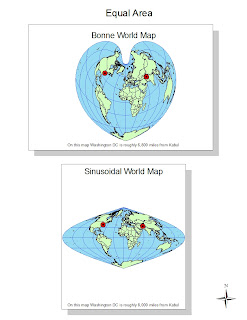As a resident of San Diego one tends to be used to the idea of being a wildfire refugee. Every couple of years we receive two weeks off of school for the wildfires that rage right near our homes. Thus I am very interested in how other communities are affected by wildfires in their area. With this final lab I wanted to explore the effect that the Station fire had on public life by analyzing its effect on public institutions such as hospitals, major roads and freeways, as well as schools and regions of high population such as generally urban areas. However, since the station fire burned within the dense forest of the San Gabriel Mountains, the impact was largely environmental rather than a great public disturbance.
However, during the fires at least 60 homes were destroyed. Compared to other Southern California wildfires this is an extremely low number. However, in future rains, more homes may be flooded and damaged as a result of the lack of vegetation that generally keeps the hillsides intact. Thus a major concern for the public may be future mudslides and flooding. In recent rains, 189 homes were ordered to evacuate because of mudslide danger.
While the fires were blazing, the everyday lives of citizens who lived near the area were disturbed because of the threat of the fire as well as the poor air quality. A great deal of communities were evacuated from their homes. Residents of northern La Canada Flintridge as well as residents of Altadena and Crescenta had to evacuate their homes.
The lives of two firemen were also lost to the Station Fire. Captain Tedmund Hall and Specialist Arnaldo Quinones lost their lives August 30 as they were setting backfires in an attempt to slow the fire. The report stated that if there was better communication concerning the “fierce behavior of the fire” they would have chosen to leave instead of trying to defend the area.
As evident on the map, there is a sliver of urbanized area within the burn zone consisting of sections of Pasadena, La Canada Flintridge and Glendale. There is one school within the western side of the perimeter as well as major roads and freeways in the eastern end which restricted access to parts of LA County.
Schools in the Glendale Unified School District, La Canada Unified School District, Antelope Valley Joint Union High School District, Burbank Unified, Keppel Union, La Canada Unified, Newhall School District, Saugus Union, Sulphur Springs and William S. Hart Unified High School District , Acton-Agua Dulce, Pasadena and Los Angeles unified school districts all cancelled school for the fire danger. Highway 39, Big Tujunga Canyon Road, Little Tujunga Canyon Road as well as Aliso Canyon Road were all closed due to the fire.
Works Cited
"City/Community Boundaries." Los Angeles County GIS Data Portal. 21 Oct. 2010. Web. <http://egis3.lacounty.gov/dataportal/?cat=6>.
Coppersmith, Scott. "Station Fire School Closures & Info." 30 Aug. 2009. Web. <http://www.myfoxla.com/dpp/news/local/Station_Fire_School_Closures>.
"InciWeb the Incident Information System: Station Fire." InciWeb the Incident Information System: Current Incidents. 10 Nov. 2009. Web. 07 June 2011. <http://www.inciweb.org/incident/1856/>.
"Latest Storm Prompts Evacuations for Station Fire Burn Areas." Southern California Public Radio. 19 Feb. 2010. Web. 8 June 2011. <http://www.scpr.org/news/2010/02/19/storm-friday/>.
"More Than 60 Homes Destroyed in L.A. Station Fire | KPBS.org." KPBS San Diego: Public Radio, TV and Web. 2 Sept. 2009. Web. 09 June 2011. <http://www.kpbs.org/news/2009/sep/02/more-60-homes-destroyed-la-station-fire/>.
"Poor Communication Blamed for Station Fire Deaths | NBC Los Angeles." NBC Los Angeles - Local News, Weather, Traffic, Entertainment, Events, Breaking News | NBC Los Angeles. 30 Apr. 2010. Web. 08 June 2011. <http://www.nbclosangeles.com/news/local/Poor-Communication-Blamed-for-Station-Fire-Deaths-92508464.html>.
"Station Fire Evacuations - LA Daily News." Home - LA Daily News. 30 Aug. 2009. Web. 08 June 2011. <http://www.dailynews.com/news/ci_13235058>.














